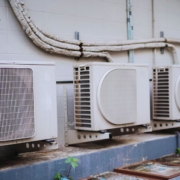Where to Run AC Condensate Drain Line
Air conditioning systems are vital for indoor comfort, especially during the scorching summer months. However, many homeowners need to pay more attention to proper drainage for their AC units. Neglecting the placement of the condensate drain line can lead to a host of issues, including water damage and compromised indoor air quality. This article delves into the significance of correct drain line placement and provides insights on where to run your AC condensate drain line for optimal performance.
Importance of Proper Drainage
Preventing Water Damage
One of the primary reasons for ensuring proper drainage of the AC condensate is to prevent water damage to your property. When the condensate drain line is improperly installed or clogged, excess water can accumulate around the unit, leading to leaks, mould growth, and structural damage.
Maintaining Indoor Air Quality
In addition to safeguarding your home from water damage, proper drainage also contributes to maintaining healthy indoor air quality. A clogged or stagnant drain line can become a breeding ground for bacteria, mould, and mildew, which can circulate throughout your home via the air conditioning system, posing health risks to occupants.
Common Issues with Drain Line Placement
Incorrect Installation Locations
One of the most common mistakes homeowners make is placing the condensate drain line in improper locations. This can include positioning it too close to the foundation, near electrical components, or in areas prone to flooding.
Blockages and Clogs
Another prevalent issue is the accumulation of debris, algae, and other contaminants within the drain line, leading to blockages and clogs. This can impede condensate flow, causing backups and potential water damage.
Where to Run AC Condensate Drain Line
Proper AC condensate drain line placement is crucial for efficient drainage and optimal system performance. Here are some guidelines for where to run your drain line:
Indoor Drain Line Placement
- Near the Evaporator Coil: Position the drain line near the evaporator coil to capture condensate effectively as it forms.
- Close to a Floor Drain or Sump Pump: Direct the drain line towards a floor or sump pump for easy condensate disposal.
Outdoor Drain Line Placement
- Away from the Foundation: Ensure the drain line is directed away from the foundation to prevent water pooling near the structure.
- Ensuring Proper Slope for Drainage: Maintain a slight downward slope along the length of the drain line to facilitate the smooth flow of condensate away from the unit.
Materials for Drain Line
When selecting materials for your AC condensate drain line, consider factors such as durability, ease of installation, and resistance to clogs. The two most common options are PVC piping and flexible tubing.
PVC vs. Flexible Tubing
- PVC Piping: Known for its durability and resistance to corrosion, PVC piping is a popular choice for drain lines.
- Flexible Tubing: Flexibility and ease of installation are the primary advantages of flexible tubing, although it may be more prone to clogs in certain conditions.
Maintenance Tips for AC Drain Line
To ensure the proper functioning of your AC condensate drain line, incorporate the following maintenance tips into your routine:
- Regular Inspections: Check the drain line periodically for signs of blockages, leaks, or deterioration.
- Clearing Blockages: If you notice reduced drainage or standing water around the unit, use a wet/dry vacuum or a pipe snake to clear any obstructions.
DIY vs. Professional Installation
While some homeowners may opt for a DIY approach to installing or maintaining their AC condensate drain line, others may prefer to enlist the services of a professional HVAC technician. Factors such as safety considerations, complexity of the installation, and warranty coverage should be considered when making this decision.
Cost Considerations
The cost of installing or repairing an AC condensate drain line can vary depending on factors such as the type of material used, the complexity of the installation, and labor costs in your area. It’s essential to obtain multiple quotes from reputable contractors and weigh the benefits of each option against your budgetary constraints.
Conclusion
Proper drainage is essential for efficiently operating your air conditioning system and protecting your home from water damage. Following the guidelines outlined in this article and ensuring the correct placement of your AC condensate drain line, you can safeguard your property and maintain a healthy indoor environment.
FAQs
- How often should I inspect my AC condensate drain line?
- It’s advisable to inspect your drain line at least once a year, preferably before the start of the cooling season.
- Can I use bleach to clean my drain line?
- While bleach can help kill mould and mildew within the drain line, it’s essential to dilute it properly and rinse thoroughly to prevent damage to the system.
- What are the signs of a clogged drain line?
- Common signs of a clogged drain line include water leaks around the unit, reduced cooling efficiency, and musty odours indoors.
- Can we relocate an existing drain line?
- It’s possible to relocate a drain line, but it’s best to consult a professional HVAC technician to ensure proper placement and installation.
- Are there any environmentally friendly options for drain line materials?
- Some eco-friendly alternatives to traditional PVC piping include recycled plastic or bio-based materials, although their availability and suitability may vary depending on your location.

